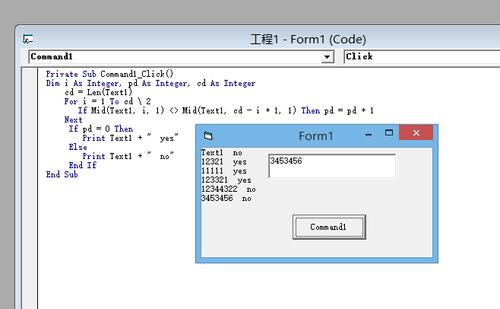Title: Mastering External Programming with Visual Basic
Visual Basic (VB) is a versatile programming language renowned for its simplicity and ease of use. External programming, also known as interprocess communication (IPC), involves communication between different processes or applications. Integrating VB with external programming opens up a realm of possibilities for creating powerful and interconnected software solutions. Let's delve into the world of VB external programming, exploring its concepts, techniques, and practical applications.
Understanding External Programming
External programming enables VB applications to communicate with other processes or systems, allowing them to exchange data, trigger actions, or synchronize activities. This capability is crucial for building robust and interconnected software ecosystems where various components interact seamlessly.
Key Concepts:
1.
InterProcess Communication (IPC):
IPC facilitates communication between different processes running concurrently on a system. It encompasses various mechanisms such as shared memory, message passing, and remote procedure calls.2.
API Integration:
Application Programming Interface (API) integration involves interfacing with external libraries, frameworks, or services to leverage their functionalities within VB applications.3.
Component Object Model (COM):
COM is a Microsoft technology enabling software components to interact with one another in a networked environment, often used for interprocess communication in Windows environments.Techniques for External Programming in VB
VB offers several techniques for external programming, each suited to different scenarios and requirements:
1.
Using WinAPI Functions:
VB can call Windows API (WinAPI) functions to interact with systemlevel resources and services. This approach provides finegrained control over system operations and enables integration with a wide range of functionalities.2.
COM Interoperability:
VB supports COM interoperability, allowing seamless integration with COM components developed in other languages such as C or C. By creating COM objects or accessing existing ones, VB applications can leverage external functionalities efficiently.3.
.NET Interoperability:
With the advent of .NET framework, VB can interact with .NET assemblies and classes, expanding its capabilities to include a vast array of functionalities available in the .NET ecosystem.4.
Web Services and APIs:
VB applications can consume web services and APIs using technologies like SOAP (Simple Object Access Protocol) or REST (Representational State Transfer), enabling communication with remote servers or cloudbased services.Practical Applications
The fusion of VB with external programming opens up numerous practical applications across various domains:
1.
Enterprise Integration:
VB applications can integrate with enterprise systems such as ERP (Enterprise Resource Planning) or CRM (Customer Relationship Management) platforms via APIs, facilitating seamless data exchange and process automation.2.
System Automation:
Leveraging external programming, VB applications can automate repetitive tasks, interact with system utilities, and manage system resources effectively, enhancing productivity and reducing manual effort.3.
Customization and Extension:
By integrating with external libraries or frameworks, VB applications can extend their functionalities, customize user experiences, and adapt to evolving requirements without reinventing the wheel.4.
Data Synchronization:
VB applications can synchronize data with external databases, cloud storage, or web services, ensuring consistency across distributed systems and enabling realtime collaboration.
Best Practices and Guidelines
To harness the full potential of external programming in VB, consider the following best practices:
1.
Security Considerations:
Implement robust authentication, authorization, and data encryption mechanisms to secure communication channels and protect sensitive information from unauthorized access or tampering.2.
Error Handling:
Employ comprehensive error handling techniques to gracefully handle exceptions, recover from failures, and maintain application stability under diverse operating conditions.3.
Performance Optimization:
Optimize communication protocols, minimize latency, and manage resource consumption effectively to ensure optimal performance and scalability of VB applications interacting with external components.4.
Compatibility and Versioning:
Maintain compatibility with external dependencies, adhere to versioning standards, and handle backward or forward compatibility gracefully to avoid compatibility issues and ensure smooth interoperability.Conclusion
Mastering external programming with Visual Basic empowers developers to create interconnected, featurerich software solutions that transcend the boundaries of standalone applications. By understanding the concepts, techniques, and best practices of external programming, developers can unlock new possibilities, streamline workflows, and deliver impactful solutions across diverse domains and industries. Whether it's integrating with legacy systems, automating business processes, or harnessing the power of cloud services, VB stands ready as a versatile tool for realizing the vision of interconnected software ecosystems.











